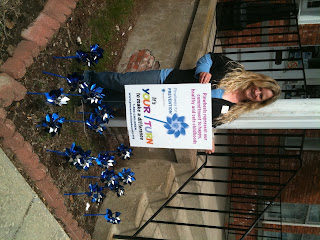Recent domestic violence homicides have prompted a community-wide effort to improve victim safety and offender accountability. As outlined in our October report to the Legislature, the Citizen's Advisory Committee on Domestic Violence has considered and recommended many different initiatives — including the GPS tracking of domestic violence offenders.
While GPS has been used successfully in locations other than New York, it has not been implemented in other than limited pilot projects in this state. Significant study and planning must be completed before GPS can be operational in Dutchess County. The committee is actively engaged in that task so that responsible recommendations can be made to the Legislature.
GPS can alert law enforcement agencies and victims whenever an offender enters a restricted zone. An electronic bracelet placed on the offender sends a signal to a computer allowing police to immediately contact the victim and also dispatch an officer to the location, buying a victim crucial time to find safety.
People assume that victims will enter a shelter if they are at risk. The reality is that there are obstacles for women entering shelters, and the forms of protection given by the system are limited. Under the current law, offenders are legally entitled to have bail set and work is under way to amend the law to allow a judge to consider the safety of a victim when considering bail. GPS tracking can provide constant offender monitoring when the accused is free after posting bail, thus allowing victims to be protected as they move about their lives.
On the surface, GPS surveillance seems like a no-brainer since it would help to enforce
the system's ability to protect a victim. Unfortunately, GPS monitoring is not always a cure-all, and implementation of the system takes extensive mobilization and resources from the community.
The technology itself presents loopholes that must be studied. These issues include the ability of the bracelets to detect offenders in the county's "no-service" zones. Use of GPS in more densely populated areas, where offenders may reside or work in closer proximity to victims, presents additional issues that must be understood prior to adoption of this new technology. Given the fact that use of this technology has no significant precedent in the State of New York, there are a multitude of legal and practical issues that must be identified and addressed before it can simply "happen."
Implementation of this system must address a process for training multiple law enforcement agencies and judges. It also needs to create a selection process to assure its deployment for appropriate offenders. We also must ensure that all community agencies are committed to use of the technology for the safe and effective implementation of the system.
Lastly, funding must be considered. Some of the costs included with the technology
are the bracelets themselves, the GPS servers and software, and the salaries for the people operating the computers 24/7.
We stand by our initial recommendation for GPS. Consideration, however, must be given to the multiple concerns that must be addressed before such a program is adopted. We are actively undertaking a comprehensive review to ensure that the plan can work, that it is affordable and that above all, it improves safety for victims. The committee, along with other local domestic violence organizations and representatives of the law enforcement community, is working to mobilize the community to explore and support this technology. The committee maintains constant contact with the county Legislature through its appointed liaison. Together we are actively working to change how the law and society treat domestic violence.
For the original article please visit: http://www.poughkeepsiejournal.com/apps/pbcs.dll/article?AID=2011104240349





